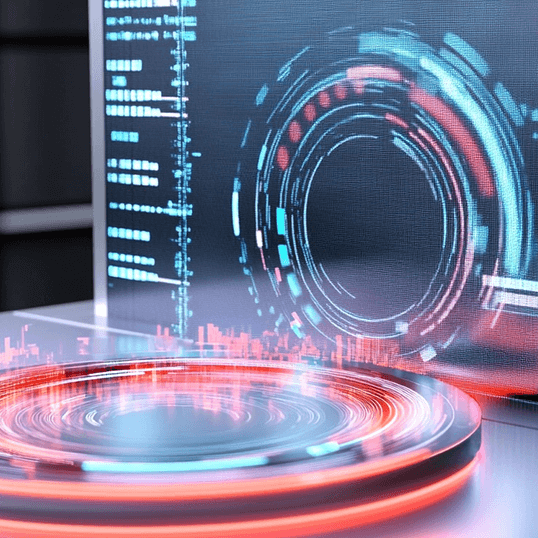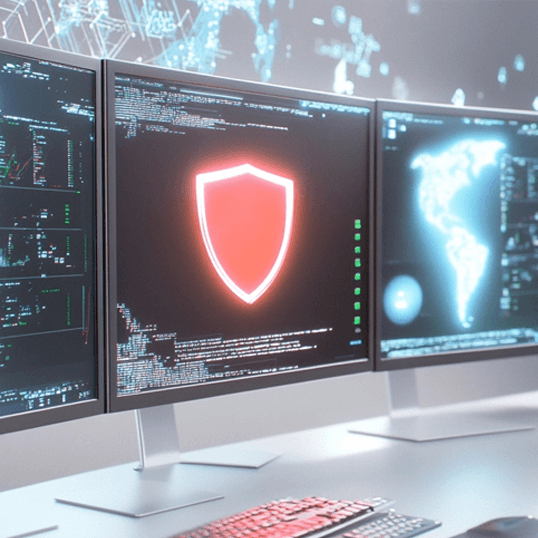Introduction
With the constantly evolving cyber threat landscape, businesses must adopt proactive security measures to safeguard their digital assets. Managed Detection and Response (MDR) has emerged as a critical cybersecurity service that enhances security resilience by detecting, analyzing, and mitigating threats in real-time. Organizations using MDR services from trusted providers benefit from improved security operations, better threat exposure management, and strong vulnerability management strategies that reduce cyber risks effectively.
Cyber threats are growing in both complexity and frequency, targeting organizations of all sizes. A reactive approach to cybersecurity is no longer enough, as attackers deploy sophisticated tactics that bypass traditional security defenses. Managed Detection and Response companies offer a comprehensive, proactive framework that continuously monitors, detects, and neutralizes threats before they cause significant damage.
MDR providers improve cybersecurity protection by offering 24/7 monitoring, advanced detection tools, and fast incident response. Unlike traditional software tools, MDR service providers combine technology with expert analysts to identify risks early and act quickly. This proactive model helps businesses minimize downtime, lower attack costs, and build resilience against today’s evolving threats.
The Growing Need for Managed Detection and Response
Rising Cyber Threats and Attack Sophistication
Cybercriminals are continuously developing advanced techniques, such as ransomware, supply chain attacks, and zero-day exploits. Traditional security measures like firewalls and antivirus software alone are no longer sufficient. Organizations require Managed Detection and Response to detect sophisticated threats early and respond promptly, reducing potential damages.
The rise of nation-state actors and financially motivated cybercriminals has amplified the risk of attacks. These adversaries use automated tools and AI-powered malware to compromise sensitive data, disrupt operations, and demand ransoms. MDR solutions integrate machine learning, behavior-based analytics, and expert threat intelligence to stay ahead of evolving threats and defend against sophisticated attack methods.
Challenges in Cybersecurity Operations
Organizations face multiple challenges in securing their IT environments, including:
- A growing attack surface due to cloud adoption and remote work.
- Shortage of cybersecurity talent and expertise.
- Delayed threat detection and response.
- Compliance requirements for data protection and risk management.
Modern IT infrastructures are highly dynamic, making security management more complex. With hybrid cloud environments, IoT devices, and third-party integrations, organizations need an agile and scalable security solution. MDR addresses these complexities by providing continuous monitoring, incident response capabilities, and strategic guidance tailored to each organization’s specific needs.
How Managed Detection and Response Enhances Cybersecurity Resilience
1. Proactive Threat Detection & Threat Exposure Management
Unlike traditional security tools that focus on reactive threat handling, MDR adopts a proactive approach by using:
Advanced Threat Intelligence: MDR providers leverage global threat intelligence to identify new attack vectors.
Behavioral Analytics: AI-driven anomaly detection helps in identifying suspicious activities before they escalate.
Continuous Attack Surface Monitoring: Identifies vulnerabilities and misconfigurations in real-time.
Proactive threat detection significantly reduces the likelihood of security breaches. MDR platforms use machine learning algorithms and real-time behavioral analysis to detect abnormal patterns and flag potentially malicious activities. This allows security teams to intervene before attackers can exploit vulnerabilities.
2. Strengthening Security Operations with 24/7 Monitoring
Security operations become more effective with MDR’s real-time monitoring and expert analysis. Organizations benefit from:
Security Information and Event Management (SIEM): MDR integrates SIEM tools to analyze logs and detect anomalies.
Security Orchestration, Automation, and Response (SOAR): Automates response actions to mitigate threats swiftly.
Threat Hunting: Security analysts proactively search for hidden threats within the network.
Round-the-clock monitoring ensures that security incidents are detected and addressed in real-time. Managed Detection and Response providers offer security operation centers (SOCs) that operate 24/7, allowing organizations to maintain a strong security posture regardless of time zones or staffing limitations.
3. Improved Incident Response & Vulnerability Management
A robust vulnerability management strategy is essential for minimizing cyber risks. MDR enhances incident response through:
Rapid Threat Containment: MDR teams isolate compromised assets to prevent lateral movement.
Automated Patch Management: Ensures timely remediation of security vulnerabilities.
Forensic Analysis: Investigates incidents to understand attack patterns and prevent future breaches.
Incident response is critical in mitigating the impact of security breaches. MDR teams employ digital forensics to analyze attack methodologies, trace threat actors, and implement effective remediation strategies. This approach not only stops current threats but also strengthens defenses against future incidents.
4. Reducing Dwell Time & Cyber Risk Mitigation
Cyber resilience depends on reducing the time taken to detect and respond to threats. MDR minimizes dwell time by:
Real-time alerting & prioritization: Identifies critical threats among false positives.
Automated remediation playbooks: Speeds up response actions to contain threats effectively.
Post-Incident analysis & risk reduction: Enhances security policies based on past incidents.
Reducing dwell time—the duration a threat actor remains undetected within a network—is essential in preventing major security breaches. The faster an organization can detect and respond to an intrusion, the lower the risk of data loss, operational disruption, or financial damage. For example:
- Cybercrime damages are projected to reach $10.5 trillion annually by 2025 (2021 Cybersecurity Almanac).
- Organizations with a mature security strategy detect breaches 52% faster (Cisco 2020 Cybersecurity Readiness Report).
- Reducing incident response time by 10% can lower cyber attack costs by 20-30% (McKinsey & Company Report).
- Businesses with real-time monitoring reduced downtime by 60% (Ponemon Institute 2021).
MDR’s continuous monitoring and rapid response mechanisms ensure that threats are neutralized before they escalate.
The Role of Artificial Intelligence in MDR
MDR solutions increasingly rely on AI-driven tools to enhance security monitoring, automate threat detection, and improve response times. AI helps analyze vast amounts of security data, identify patterns, and predict potential attack vectors before they occur.
How MDR Complements Existing Security Tools
MDR does not replace existing cybersecurity tools but enhances them by providing continuous monitoring, expert-led analysis, and advanced automation capabilities. It works alongside firewalls, SIEM, and endpoint protection platforms.
MDR vs. Traditional Security Approaches
Unlike traditional security approaches that rely heavily on manual intervention, MDR integrates automation, AI, and threat intelligence to proactively manage cyber threats, significantly improving response times and effectiveness.
Future Trends in Managed Detection and Response
With cyber threats evolving rapidly, MDR is expected to incorporate more AI-driven automation, deeper threat intelligence integration, and expanded cloud security capabilities. Organizations must adopt MDR to stay ahead of emerging threats.
Conclusion
Managed Detection and Response (MDR) is now a core part of modern cybersecurity strategies. By partnering with the right MDR providers and vendors, businesses can access advanced detection tools, expert monitoring, and automated responses that protect against evolving threats.
MDR not only lowers cyber risks but also helps organizations meet compliance requirements and control security costs. By choosing the best managed detection and response companies, businesses can focus on growth while maintaining enterprise-grade protection.
Ultimately, adopting MDR is a smart investment in long-term resilience.
To learn more about MDR services and pricing, and how CyberProof can strengthen your cybersecurity posture, visit our website.
FAQ
What is Managed Detection and Response, and how does it work?
Managed Detection and Response is a managed security service that provides continuous threat detection, incident response, and remediation to protect organizations from cyber threats. It integrates threat intelligence, machine learning, and human expertise to identify, analyze, and respond to cybersecurity incidents in real-time.
How is MDR different from traditional cybersecurity solutions?
Unlike traditional security tools, Managed Detection and Response combines threat intelligence, behavioral analytics, and human expertise to proactively detect and respond to threats in real-time. Traditional security solutions are often reactive, requiring manual intervention, whereas MDR offers automated and expert-driven threat mitigation.
Does MDR replace the need for an in-house security team?
Not necessarily. Managed Detection and Response enhances existing security teams by providing additional expertise, monitoring, and threat intelligence to strengthen overall cybersecurity resilience. Organizations with limited security resources can rely more on MDR providers for comprehensive protection.
Can MDR protect against ransomware attacks?
Yes, Managed Detection and Response detects ransomware activities early, isolates infected systems, and helps mitigate attacks before they cause significant damage. MDR also provides guidance on best practices for ransomware prevention and recovery.
How does MDR integrate with existing security infrastructure?
Managed Detection and Response seamlessly integrates with existing security tools, including SIEM, endpoint detection and response (EDR), and cloud security platforms, enhancing their effectiveness. It works in tandem with existing security measures to provide a more robust cybersecurity posture.
What industries benefit most from Managed Detection and Response services?
Industries handling sensitive data, such as healthcare, finance, and government sectors, benefit greatly from MDR due to its proactive approach to threat detection and compliance support. However, MDR is valuable for businesses of all sizes and industries.
How can businesses get started with Managed Detection and Response?
Organizations can start with MDR by evaluating their security needs, partnering with a trusted MDR provider, and integrating MDR into their cybersecurity framework. A consultation with an MDR provider can help tailor a solution that aligns with business objectives.













